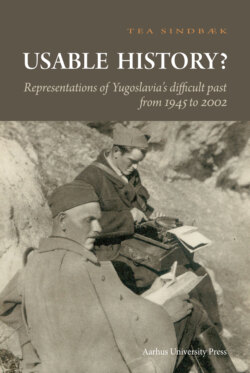Читать книгу Usable History? - Tia Sindbaek - Страница 27
На сайте Литреса книга снята с продажи.
The official report on Jasenovac
ОглавлениеThe Ustasha concentration camp complex at Jasenovac was a main symbol of Ustasha crimes and terror. Immediately after the war Jasenovac was the subject of an official investigation, testifying to the terror and inhumanity of the place.
The report on Jasenovac was published in 1946 by the Croatian National Commission for Investigation of crimes committed by the occupiers and their helpers. In this report, the commission made no attempt to hide the horrors of the camp system at Jasenovac. On the contrary, it was made clear that the camp should be seen as an “instrument to the annihilation of our peoples”.17 The report described how prisoners were worked or starved to death in Jasenovac, as well as how some were simply brought there to be killed. The procedures and terrors of the camp were described in detail through numerous and lengthy citations from victims. One survivor, Jakob Finzi, recounted:
I worked as a grave digger at the camp cemetery only for 10 days. During this time I buried corpses without heads, without hands, with cracked heads, with fingers and toes torn of, with nails driven into the breast, with cut off genital organs, corpses deformed, blue and black from blows. In those ten days I buried, together with the comrades, about 3000 corpses …18
In describing the crimes committed in the camp, the report stated that “it seems unbelievable, impossible, that one can find criminals who will out of so much sadism, out of so much perversity imagine and carry out such cruel ways and means of torturing people.”19
The ethnic identity of the victims – mainly Serbs, Jews and Roma – was openly stated. When massacres were aimed at only one ethnicity, this was clearly described, as in the case of a liquidation of about 600-700 Serbs near Jablanac.20 Yet the ethnic aspect was not in itself foregrounded. In most instances, the victims were simply referred to as prisoners. With regard to the perpetrators, ethnic affiliation was almost completely absent. They were referred to either as Ustasha or Fascists – or sometimes as the Germans and the Ustasha. The report did not suggest any connection between the Ustasha and the Croatian people. On the contrary, it was emphasised that “the leaders of the Ustasha terrorist organisation were well aware, already before their entry into Yugoslavia, that they did not have support in the popular masses and that they could only remain in power by means of terror.”21
It was underlined in the report that the precise number of victims at Jasenovac could not be established. Yet by adding the number of victims of mass killings and the number of individuals killed in the camp, the report reached a figure around 500,000-600,000.22 In conclusion, the report stated: “Never did a single criminal in history ever slaughter a tenth of a people, such as Ante Pavelić did to his own people”.23 Thus, the victims were seen as belonging essentially to one people. In this perspective, the crimes committed by the Ustasha, and in Jasenovac in particular, were not seen in separate ethnic terms, but as a major crime against the common Yugoslav population of the NDH. At the same time, Pavelić was presented not as a Croatian nationalist, but as a traitor towards his own Yugoslav people.
